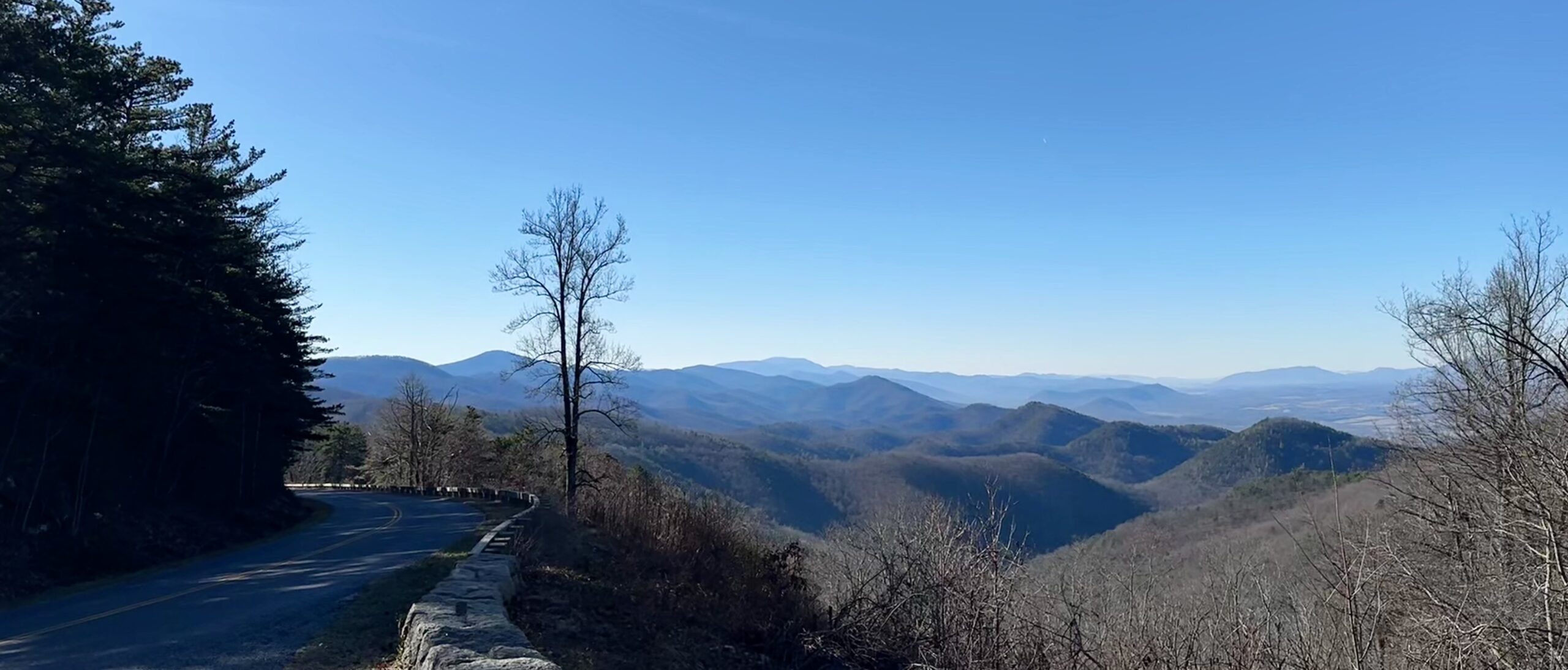Enhancing habitat along the Blue Ridge Parkway
Developments to Cranberry Creek Preserve enriching local ecosystem
In the hills of eastern Ashe County near Glendale Springs, CTNC’s Cranberry Creek Preserve is a hidden gem along the Blue Ridge Parkway. Spanning 200 acres and hugging the Parkway for nearly a mile and a half, from milepost 249.5 to 251, this protected property has recently undergone an exciting transformation that will benefit downstream residents, hikers, wildlife, and the environment.
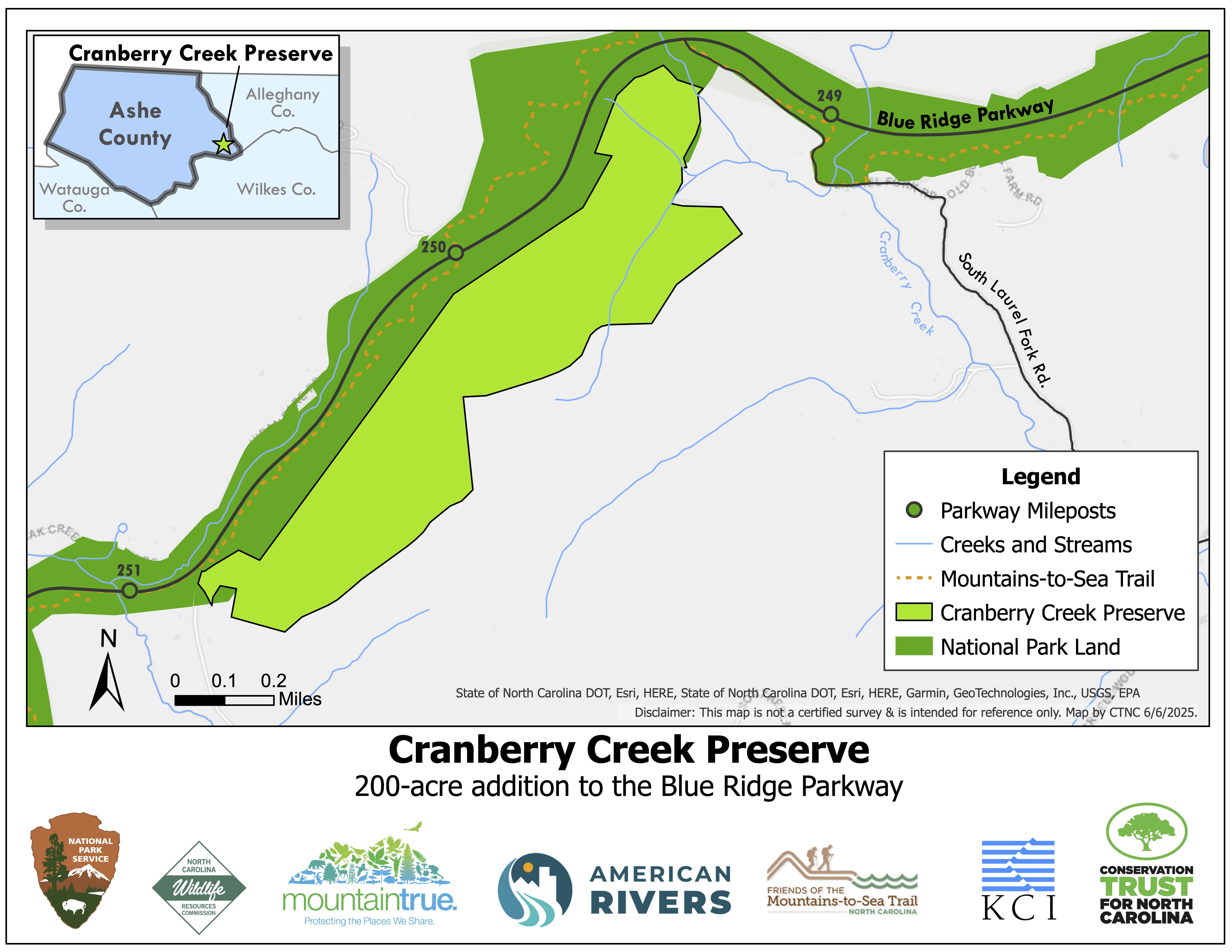
CTNC’s Cranberry Creek Preserve previously held a failing earthen dam that blocked an unnamed tributary of Cranberry Creek. Now that it’s removed, the stream flows freely for the first time in nearly 75 years, restoring natural hydrology to the area. This ecological enhancement to the flowing channel of the stream will support brook trout and many other native species.
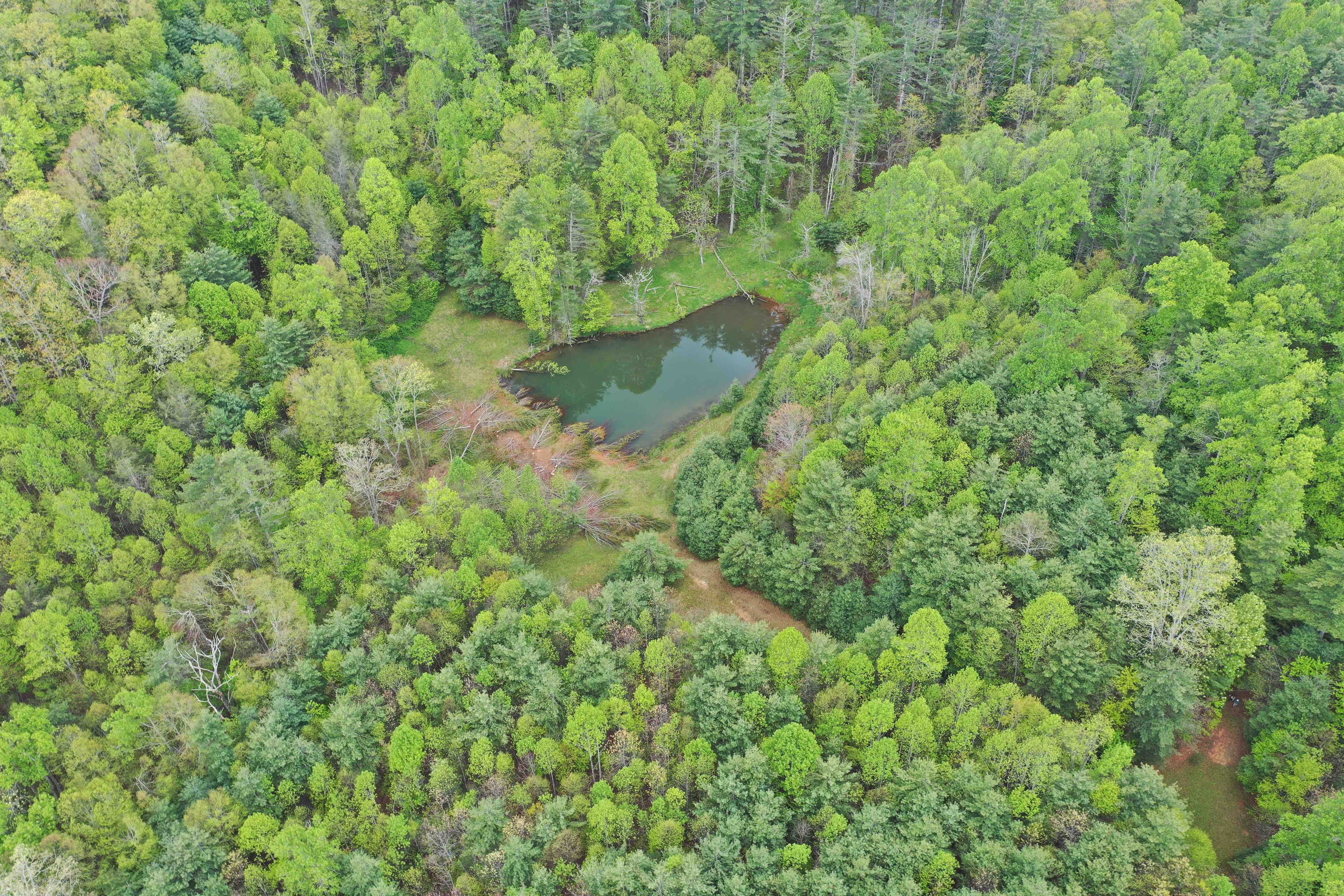
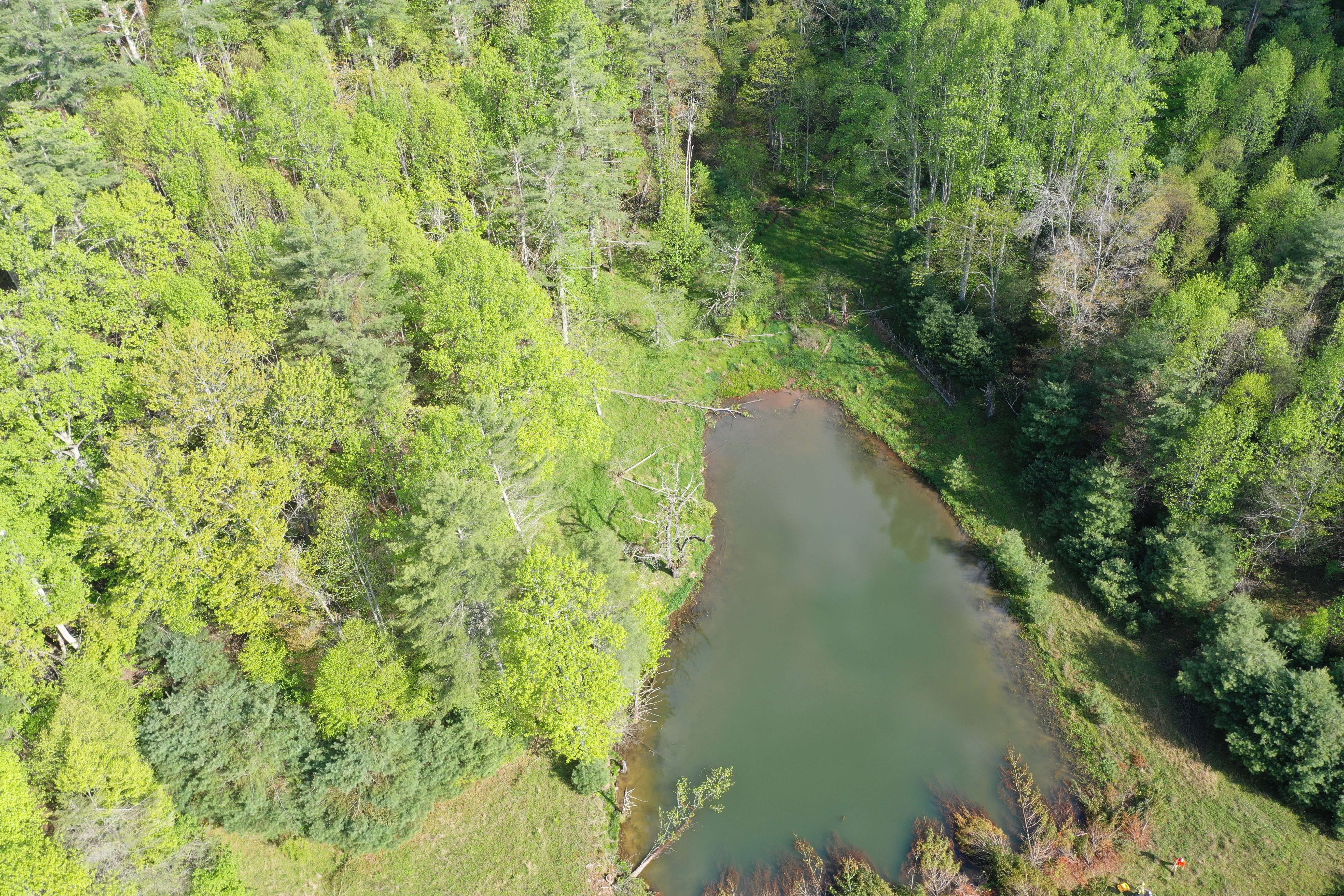

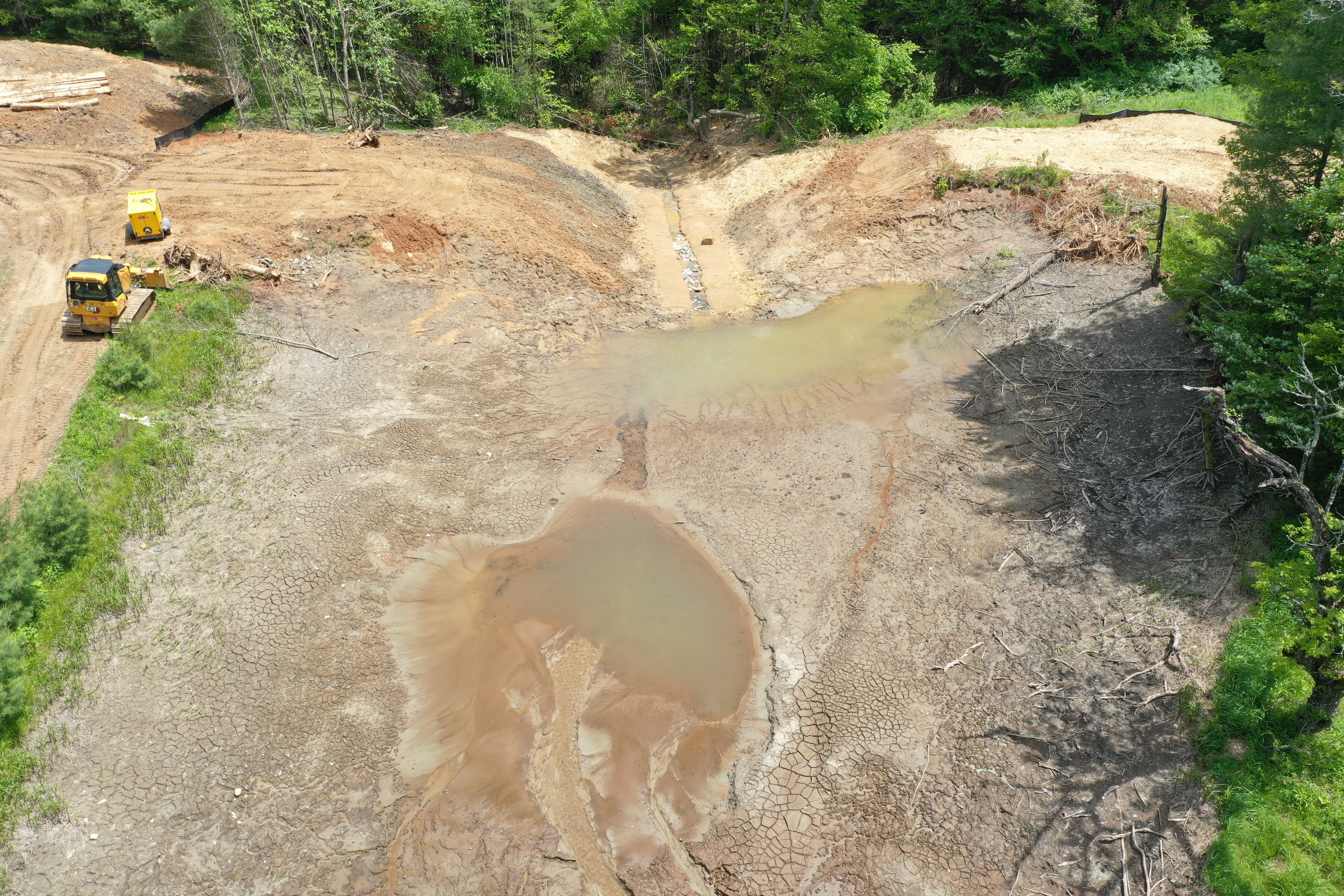
This effort is a collaboration among several conservation partners, including MountainTrue, American Rivers, KCI Engineering, the NC Wildlife Resources Commission and the National Park Service, all working alongside CTNC to restore native brook trout habitat and the natural landscape.



Brook trout, Salvelinus fontinalis, are the only native species of trout in North Carolina. Found primarily in the high elevations of the Blue Ridge and Smoky Mountains, these fish prefer pristine, cold streams with rocky bottoms and dense overhanging vegetation. Often referred to as “speckled trout” by locals, brook trout are known for their vibrant coloring and delicate size. Learn more about brook trout.
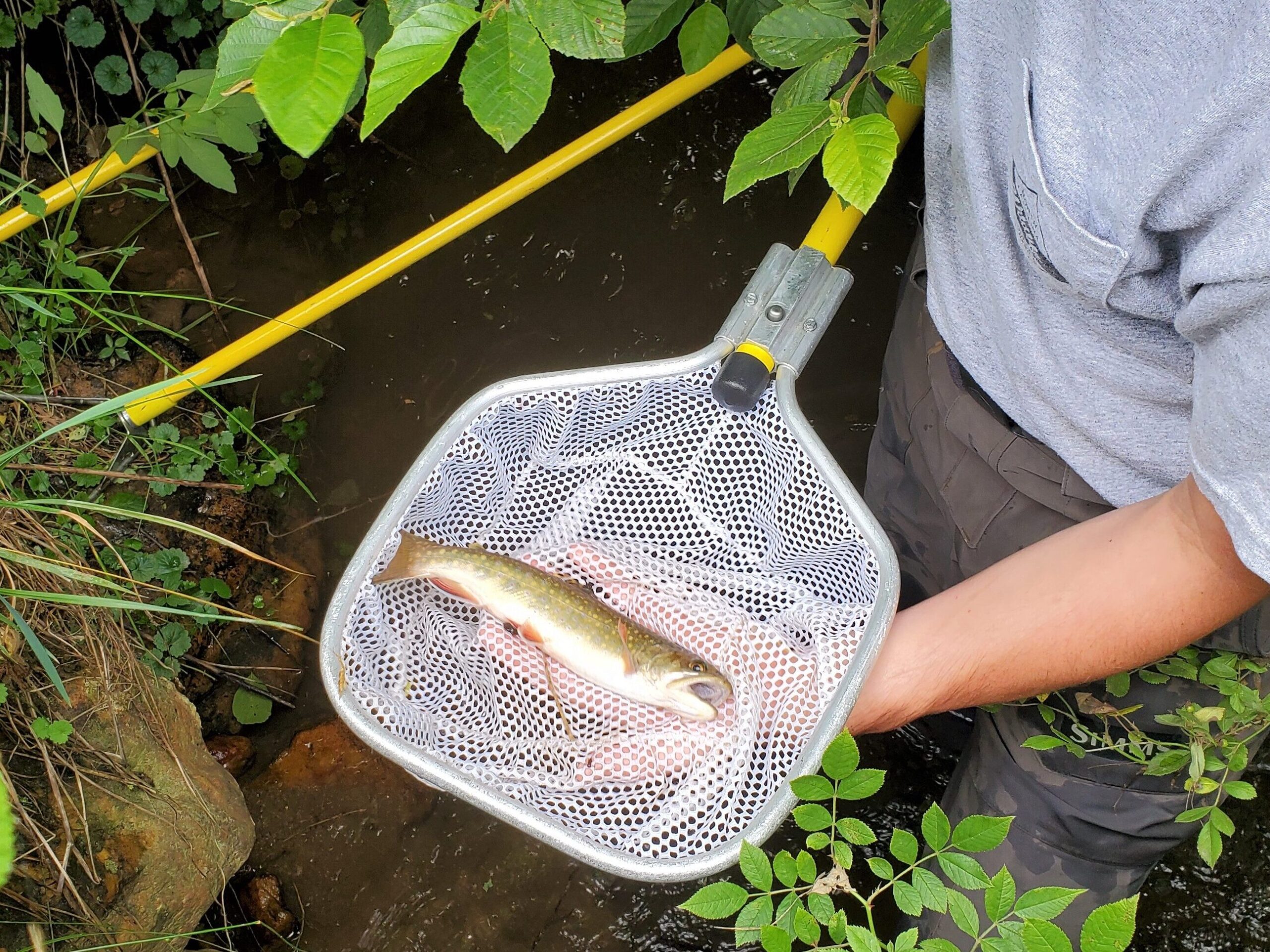
Brook trout caught by a fisheries biologist directly below the dam prior to its removal. Soon, these fish will be able to migrate further upstream and enjoy cooler, cleaner water.
CTNC is also partnering with Friends of the Mountains-to-Sea Trail to prepare Cranberry Creek Preserve to host a re-route of a key section of the Mountains-to-Sea Trail . Currently, this popular hiking route crosses the Parkway motor road twice along this stretch, hugging the edge of the road in some places. The planned re-route will eliminate the need for those road crossings and take hikers off the shoulder and into the peaceful woodlands of Cranberry Creek Preserve—offering a safer and more immersive experience in nature.
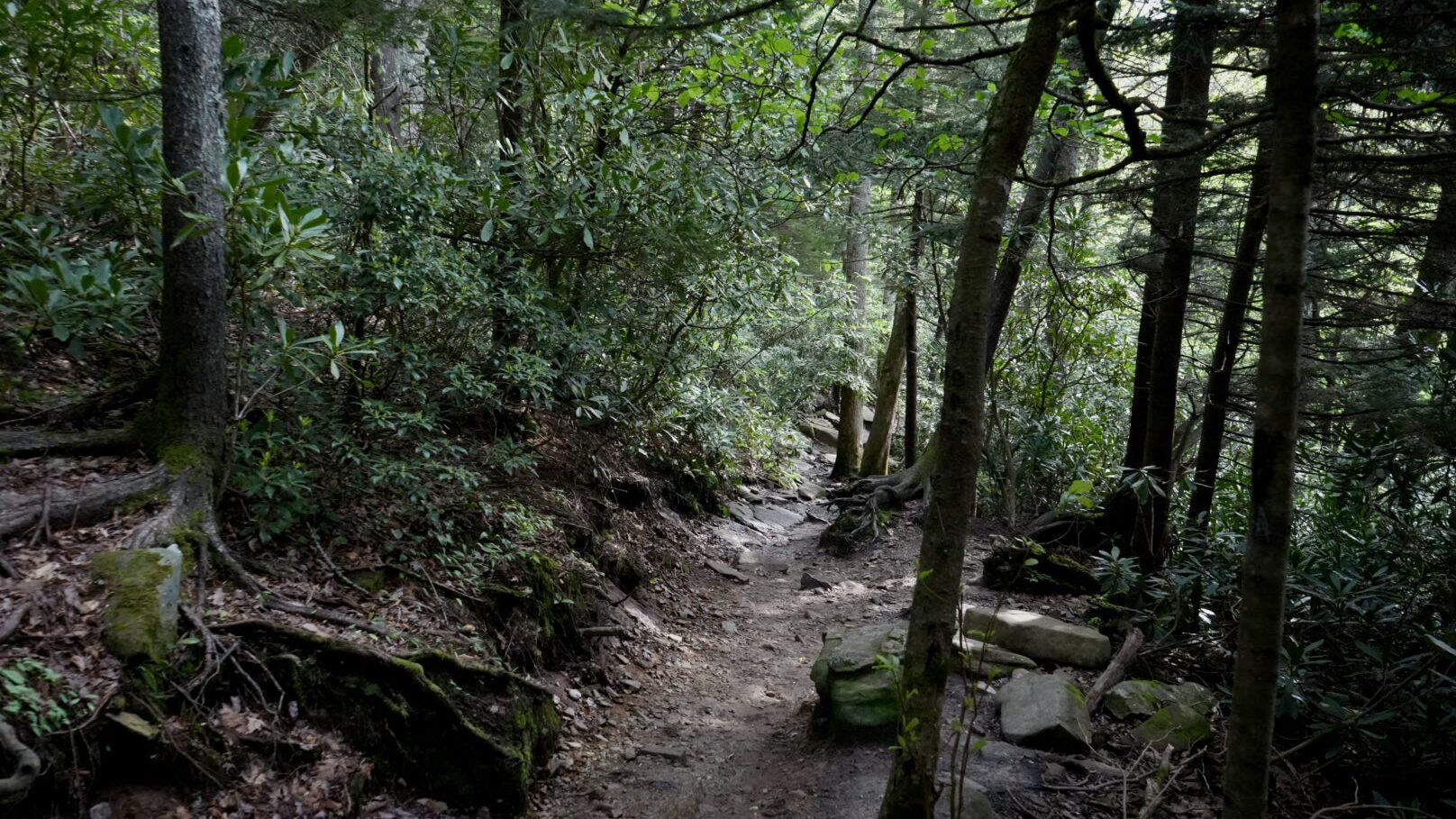
CTNC plans to transfer ownership of the preserve to the National Park Service, ensuring its permanent protection as part of the Blue Ridge Parkway. This transition not only safeguards the land for generations to come but also opens it to enhanced recreational use and ecological restoration.
The Princeville Community Garden’s Grand Opening
A floodplain reimagined into a community garden takes root
On April 19, Princeville, NC celebrated an exciting milestone with the opening of the Princeville Community Garden. With nearly 70 community members coming and going throughout the day, the event was a joyful celebration of collaboration, connection, and growth.
The opening event featured grilled food, garden-themed kids’ activities, a seed giveaway, and an art display featuring the creative talents of Princeville Elementary students. The exciting and collaborative day couldn’t have been made possible without the support of the Town of Princeville, Resilience Corps NC, Freedom Org, MOSS Kids, Princeville Elementary. Catering was provided by Big Bones Meat Market, My Jnlle’Z, and SuSu & Kizzie’s Sweet Treats.
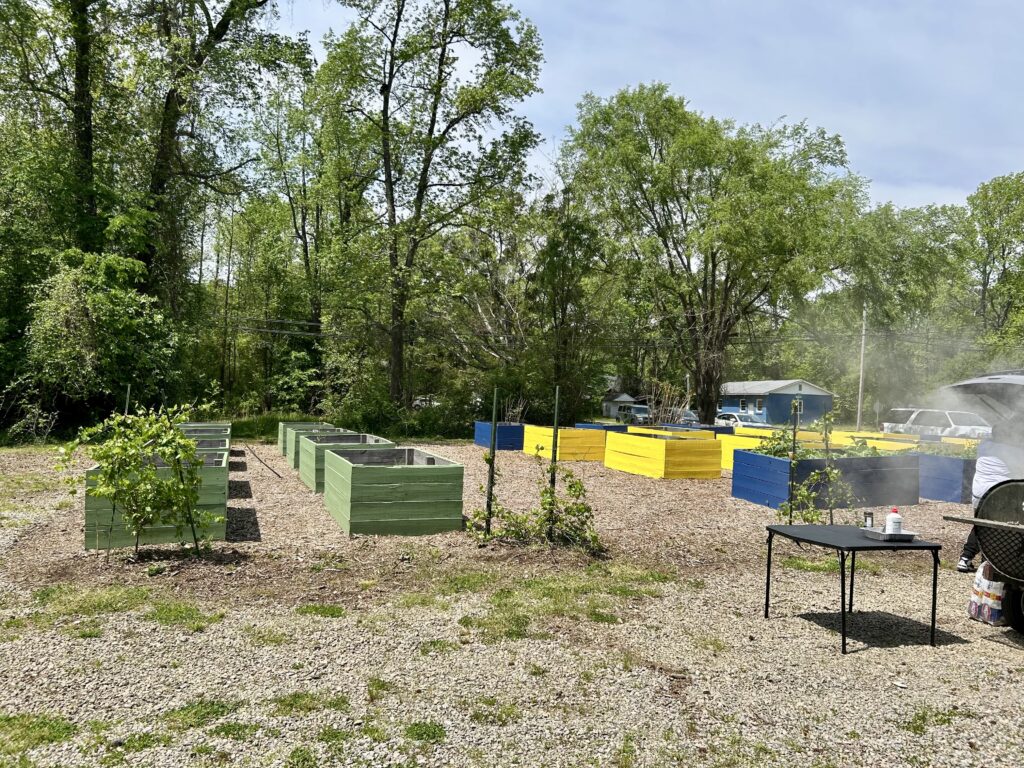
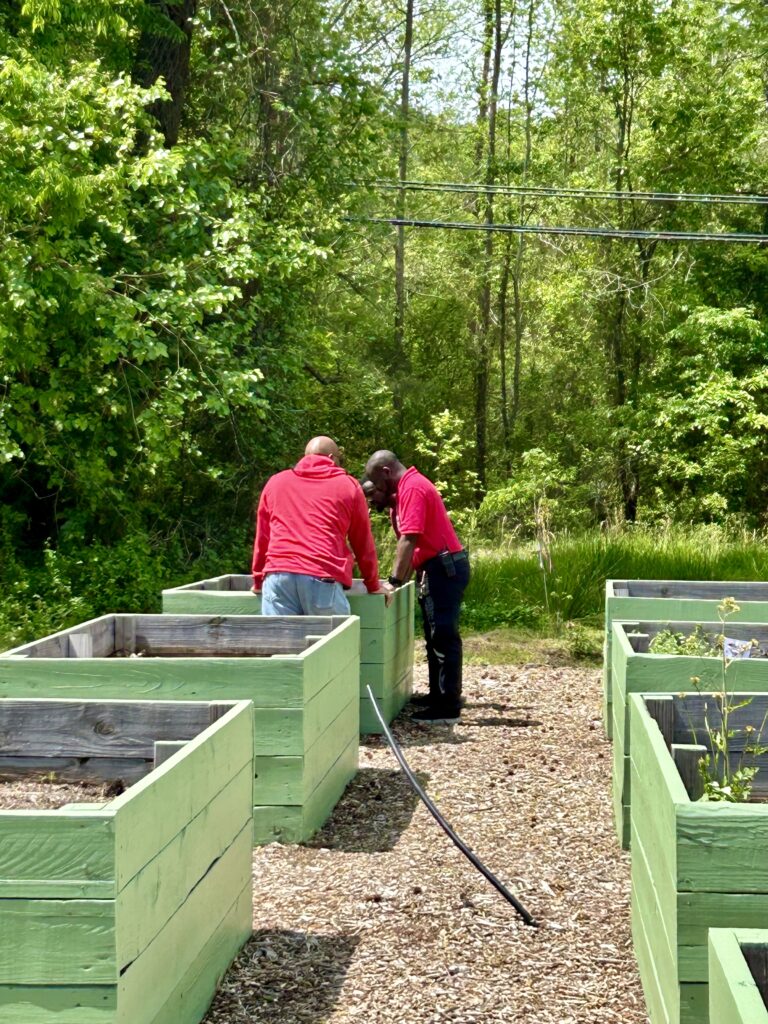
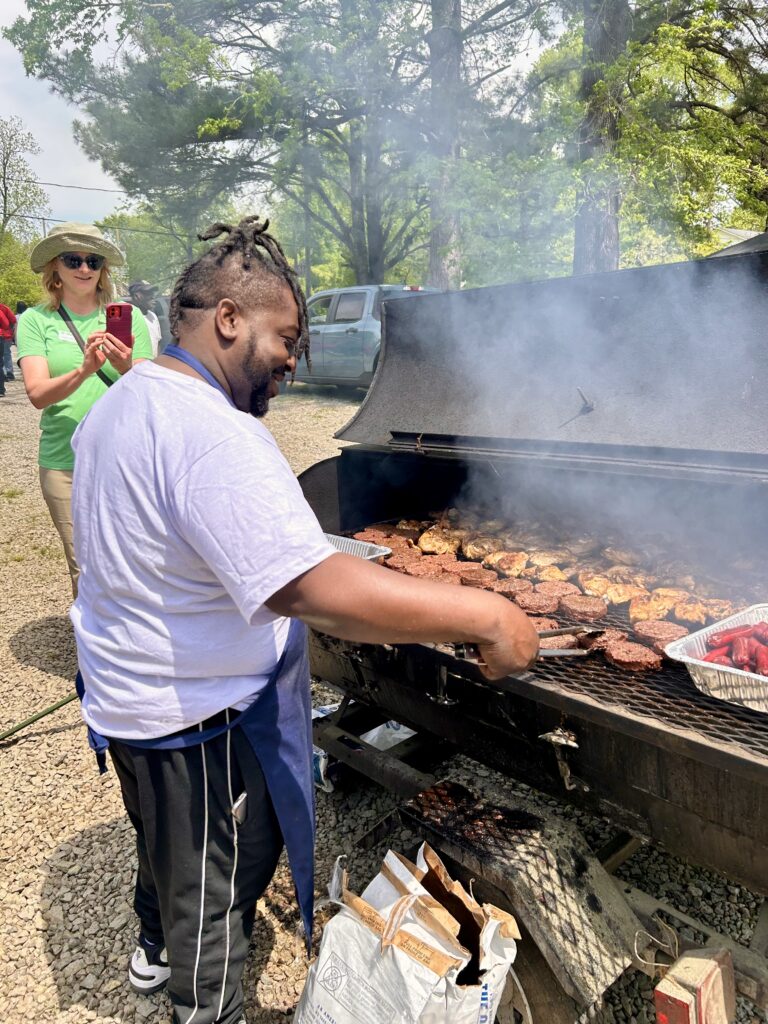
The garden itself represents more than a place to grow food. It’s the result of years of thoughtful planning and collaboration. The garden is a key outcome of the land use plan developed in partnership with the NC State Coastal Design Lab and Town leaders. Located on land purchased through FEMA’s buyout program, this area could no longer be developed for commercial or residential use, but thanks to the vision of leaders and residents in Princeville, it’s now a vibrant community space.
The garden also stands as a reimagined nature-based solution to mitigate flood damage and restore the land to a meaningful and productive use. To support stormwater management, the garden space will act as a rain garden as well. This is especially impactful as Princeville is located in a vulnerable region along the Tar River with devastating flooding events in the past. With this parcel of land reconstructed into a community garden, the benefits exceed just harvesting fresh fruits and vegetables.

CTNC was honored to have played a role in turning a community garden idea into a reality. CTNC’s Resilience Corps NC service member, Anyah Brown, has assisted with the creation of the garden throughout her term.
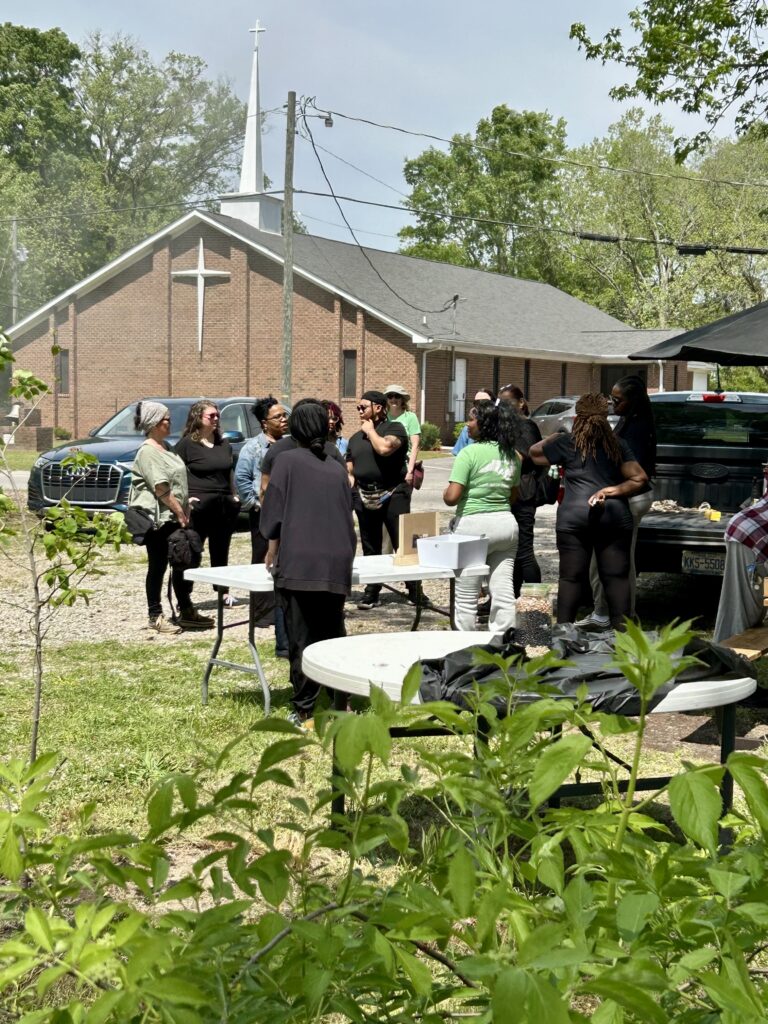
Mayor Bobbie Jones and Commissioners Vananza Brown, Joe Myrick, and Lee Staton shared their support for this collaborative achievement through their time and attention. Cynthia Satterfield, Erin Witcher, and Beth Mullenberg joined the celebration as representatives for CTNC, highlighting the tangible difference made by Resilience Corps NC in North Carolina communities.
This area dedicated to growing fresh and healthy food and connecting with others will foster a greater sense of community in the Town of Princeville for generations to come.
Blue Ridge Parkway Designated a National Historic Landmark
A New Recognition for America’s Favorite Drive
Spanning 469 miles through the breathtaking Appalachian Mountains, the Blue Ridge Parkway has long been cherished as “America’s Favorite Drive.” Now, this beloved roadway has received an official designation as a National Historic Landmark, cementing its place in history as a protected national treasure.
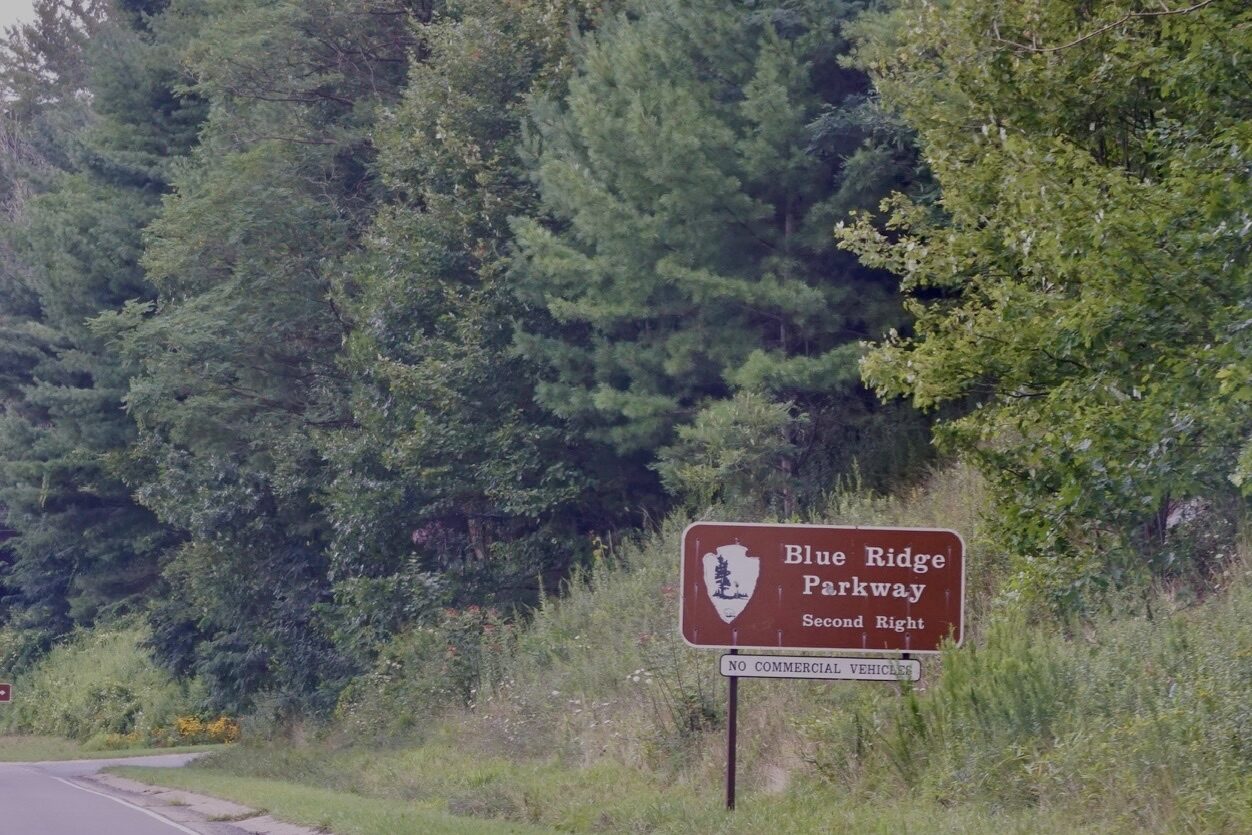
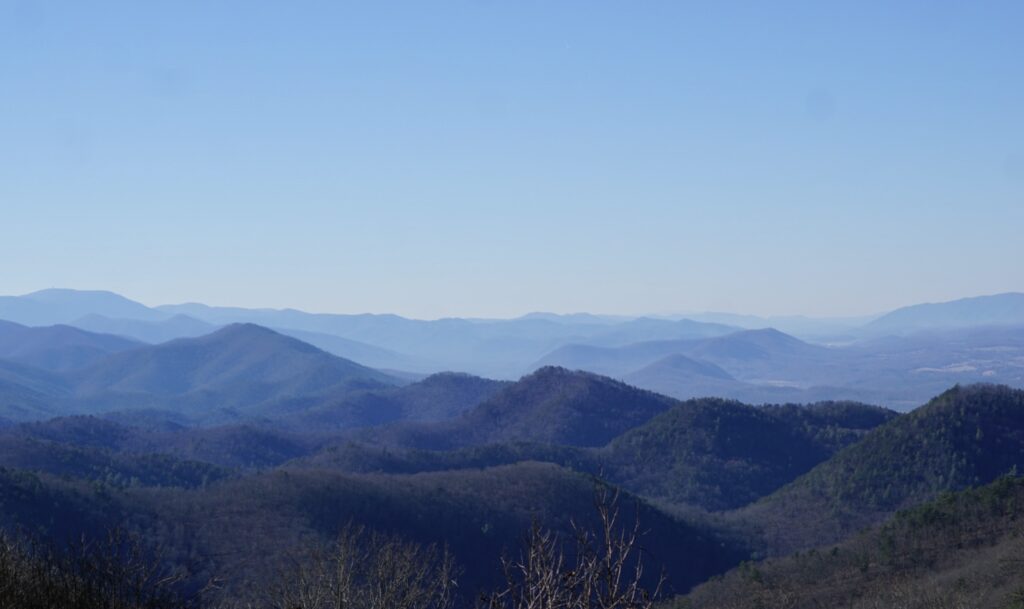
Learn more about the History & Culture of the Blue Ridge Parkway.
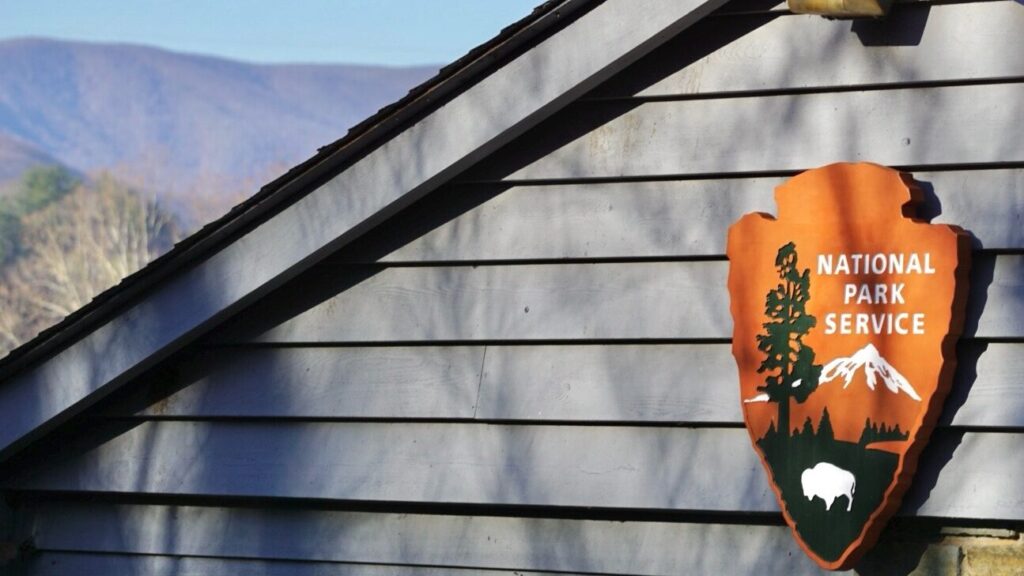
For nearly 30 years, CTNC has collaborated with the National Park Service, local land trusts, landowners, and public agencies to protect breathtaking views seen from the Parkway. To date, CTNC has protected more than 37,000 acres along the Blue Ridge Parkway.
Explore Conservation Areas along the Parkway:

This new status not only recognizes the Parkway’s rich cultural, historical, and environmental significance but also ensures its preservation for generations to come.
Reflection of Service: Resilience Corps NC 2023-24
Highlighting the positive contributions made by members to communities during their service term
Through each AmeriCorps service term, CTNC’s Resilience Corps NC program builds partnerships and fosters collaboration throughout North Carolina to achieve a more resilient state, better prepared to meet the challenges presented by our changing climate.
At the end of July, Resilience Corps NC members gathered in Wilmington, NC for an End of Year Summit. During the event, we sat down with members to learn more about their service term and asked them the following questions:
- What led you to serve with Resilience Corps NC?
- What was a highlight or rewarding experience of your service term?
- What does a resilient community mean to you?
Their answers vary, as members are placed at host sites throughout the state, each working toward specific goals to better their local communities. One thread that ties every service placement together is the great impact that one person can have in strengthening the community and furthering our shared conservation goals. As we reflect on the last service term and look ahead to the outcome of the current term, we are grateful for their perspective.
With the 2024-25 service term underway, progress made during the previous year advances, ensuring that the contributions made by members are built upon and expanded. Last year, there were 24 members stationed at 18 host sites. This year, 24 members are serving local communities through 21 host sites. Six members from the previous service term decided to stay with Resilience Corps NC for a second term. Five of the returning members are featured in the video: Rae Cohn, Jessica Blackburn, Gina Patton, John Sugg, and Lauren Waibel. By choosing to return, they will ensure continuity for the organizations they serve, strengthening long-term program sustainability and deepening their impact.
We look forward to seeing our current members’ contributions to their host site and building connections in their community. Through environmental education, land protection and stewardship, flood mitigation, volunteerism, and climate and conservation outreach, our members are actively contributing to bettering our state for future generations.
Welcoming the 2024-25 Resilience Corps NC Cohort
Expanding statewide partnerships through collaborative resilience-focused service
Resilience Corps NC, CTNC’s AmeriCorps program, has recently welcomed its latest cohort of service members who will be serving with organizations throughout North Carolina. Members will focus on a variety of crucial areas including environmental education, land protection and stewardship, volunteerism, and climate and conservation outreach, all in the service of strengthening community resilience across the state. Their efforts will help boost the capabilities of each host site as they collaborate with local communities.
This year, Resilience Corps NC features 21 host sites and 24 members, including 6 members returning for a second year of service. The program has also grown to include 6 new host site organizations, broadening CTNC’s network of conservation and community partners. Our members are stationed across the state, from the mountains of Sylva to the coast of Wilmington.
Resilience Corps NC 2024-25
| Anyah Brown Town of Princeville | Colby Dukas Piedmont Triad Regional Council | Courtney Smith North Carolina Zoo | Eli Haines-Eitzen* Eno River Association |
| Fiona Thompson Boys and Girls Club of the Plateau | Floyd Pearsall North Carolina Coastal Land Trust | Gina Patton* Balsam Mountain Trust | Gracie Bartel Keep Charlotte Beautiful |
| Hayden Reed North Carolina Zoo | Jack Kagan North Carolina Foundation for Soil & Water Conservation | Jadon Hernandez North Carolina Zoo | Jessica Blackburn* Highlands-Cashiers Land Trust |
| John Sugg* Upper Coastal Plain COG | Josephine Schall Working Landscapes | Joshua Myrick Piedmont Environmental Alliance | Lauren Waibel* North Carolina Coastal Land Trust |
| Nicole Manalis Kerr Tar COG | Preference Evans A Better Chance A Better Community | Rae Cohn* The Hub Farm | Sarah Gelleny Green River Preserve |
| Savannah Lytle Cape Fear River Watch | Sierra Stickney Sound Rivers | Stacy Dominguez Coastal Carolina Riverwatch | Sterling McDonald Central Pines Regional Council |
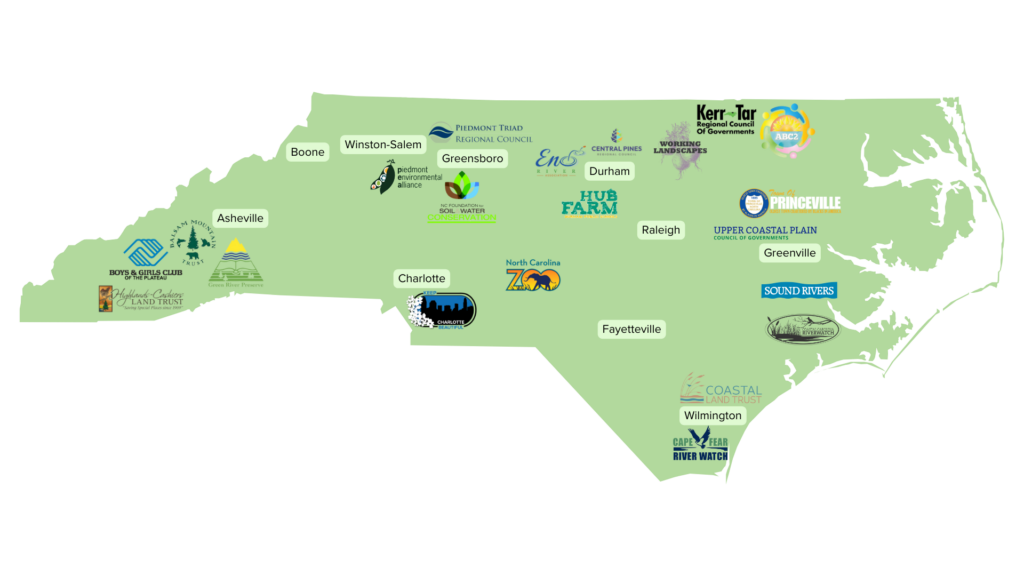
In addition to the satisfaction of knowing they are making a difference, members will receive educational benefits, professional development training, and networking opportunities throughout their term, equipping them for future careers in conservation and community leadership beyond their service term. These opportunities may include Environmental Education certification, attendance at conservation conferences, career development training, and more.
We’re proud to share that several host site organizations represented on the map above now employ Resilience Corps NC alums, who have made a lasting commitment to conservation, nature-based solutions to climate change, and community resilience, in part because of the strong footing they gained by going through the program.
We are thrilled to have 6 members returning for a second year of service with Resilience Corps NC
In the east, John Sugg will build on the successes he achieved with the Upper Coastal Plain Council of Governments across five counties last year, focusing on a variety of flood mitigation strategies. Lauren Waibel will also return to the coast to serve with our partners at North Carolina Coastal Land Trust, carrying out the important work of stewarding land and building capacity for community conservation.
In the Piedmont, Rae Cohn will return to serve as an Environmental Educator with the Durham Public Schools Hub Farm, helping shape the next generation of environmental stewards. Eli Haines-Eitzen will also continue serving as Education Program Coordinator with the Eno River Association, expanding their capacity to educate and inspire present and future conservationists.
And in the west, Gina Patton will support our partners at the Balsam Mountain Trust by conducting environmental education and community outreach. Finally, Jessica Blackburn will return to the mountains to serve with our partners at Highland-Cashiers Land Trust and continue educating the next generation about the flora, fauna, and culture of the Southern Appalachians.
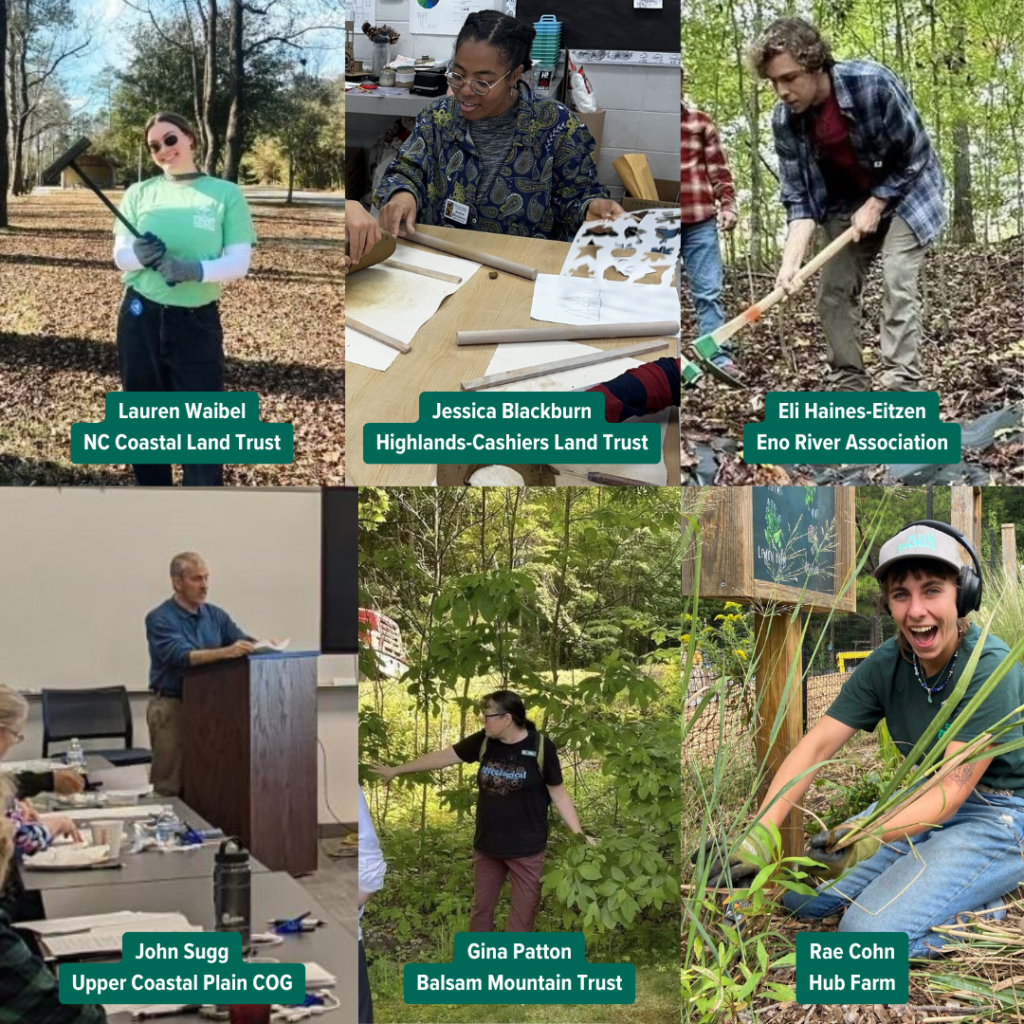
We are fortunate for the renewed commitment made by John, Lauren, Rae, Eli, Gina, and Jessica. Because they chose to return, they will provide continuity for the organizations they serve in, helping them sustain program efforts long-term and increase the depth of impact. Knowing our program now consists of 25% returning members allows us to create a stronger foundation for new members to thrive.
Knowledgeable peers are a vital part of ensuring that new members hit the ground running. This was apparent during cohort orientation when senior members spent hours sharing recommendations with new members, patiently listening to their questions, and planning ways to support each other throughout this term.
Looking ahead at a stronger cohort and stronger communities
This cohort will serve in rural, suburban, and urban areas. Many were born and raised in NC, while others chose to move from other states to serve here. Members representing this cohort span across the spectrums of age and education, our youngest members are in their 20s and our oldest are in their 60s, highlighting that there is no set timeline or pathway to participating in public service.
We look forward to sharing more about each member and their impact as the 2024-25 service term goes on. In the meantime, we are confident that the communities they serve will be better prepared to meet the challenges presented by our changing climate because of their efforts in community engagement, environmental education, and conservation stewardship. Stay tuned to share in their trials and triumphs.
CTNC’s 2024 Conservation Celebration
Heavy rains and wind couldn’t dampen the festivities at this year’s Conservation Celebration
This year’s Conservation Celebration was incredibly fulfilling thanks to our remarkable supporters, board members, and staff. The event took place at the picturesque Gideon Ridge Inn in Blowing Rock, NC, bringing in more than $55k in donations that will support CTNC’s mission and ongoing projects to protect North Carolina’s natural lands for future generations. With forty-five event sponsorships representing nearly ninety supporters, we are immensely grateful for their generosity that ensures our work can continue.
The turnout was especially gratifying due to extreme weather conditions caused by tropical storm Debby. Even with the heavy rain, the Blue Ridge Mountains still created a perfect backdrop for the event.
Special thanks to our hosts
Cobb and Cindy Milner, owners of Gideon Ridge Inn, generously donated delicious hors d’oeuvres and beverages, staff time, and the use of their inn for this year’s fundraiser. As always, they were incredible hosts, and we appreciate their time and effort to make this event memorable.
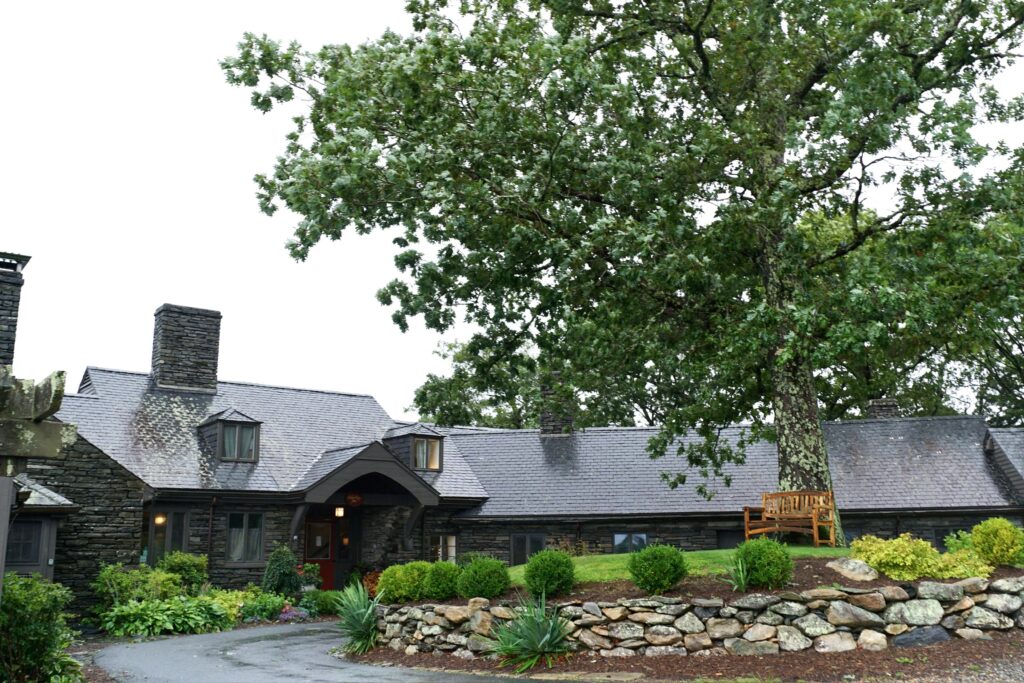

CTNC’s Board President, Bill Leslie, Executive Director, Cynthia Satterfield, and Western Conservation Manager, Aaron Flannery, each shared an update on CTNC’s current projects, recent successes, and how the funds raised during the event and throughout the year will continue to advance conservation across our state. Together with our entire community of supporters, we are building a more resilient North Carolina.
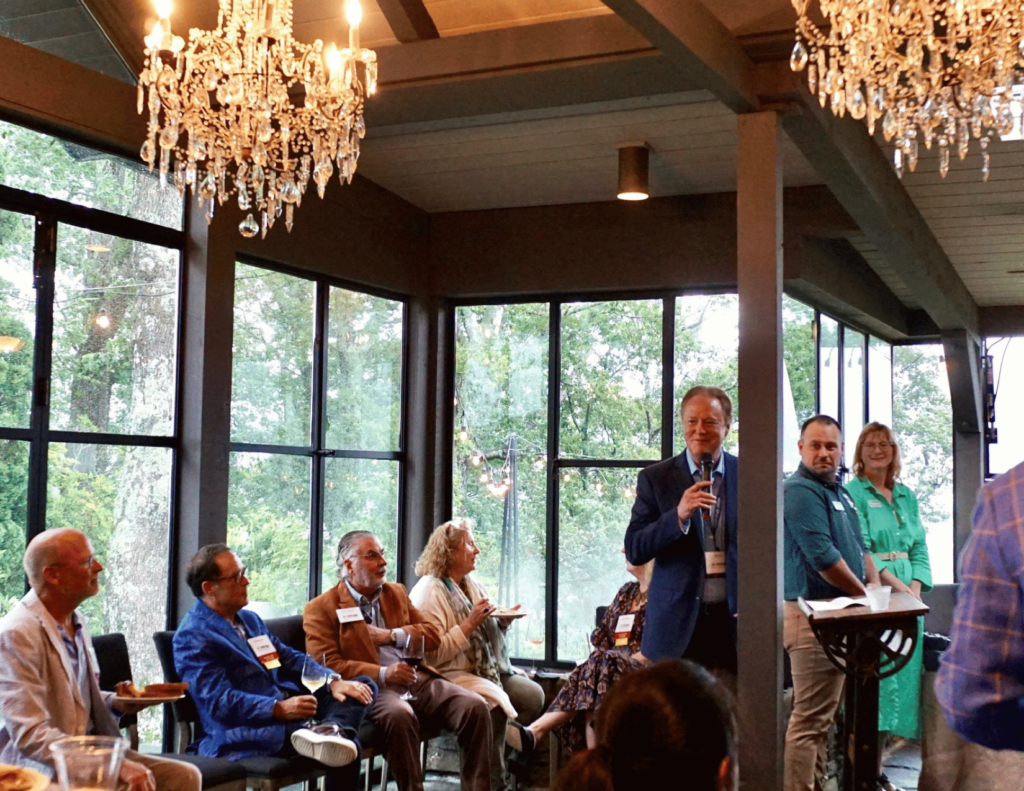
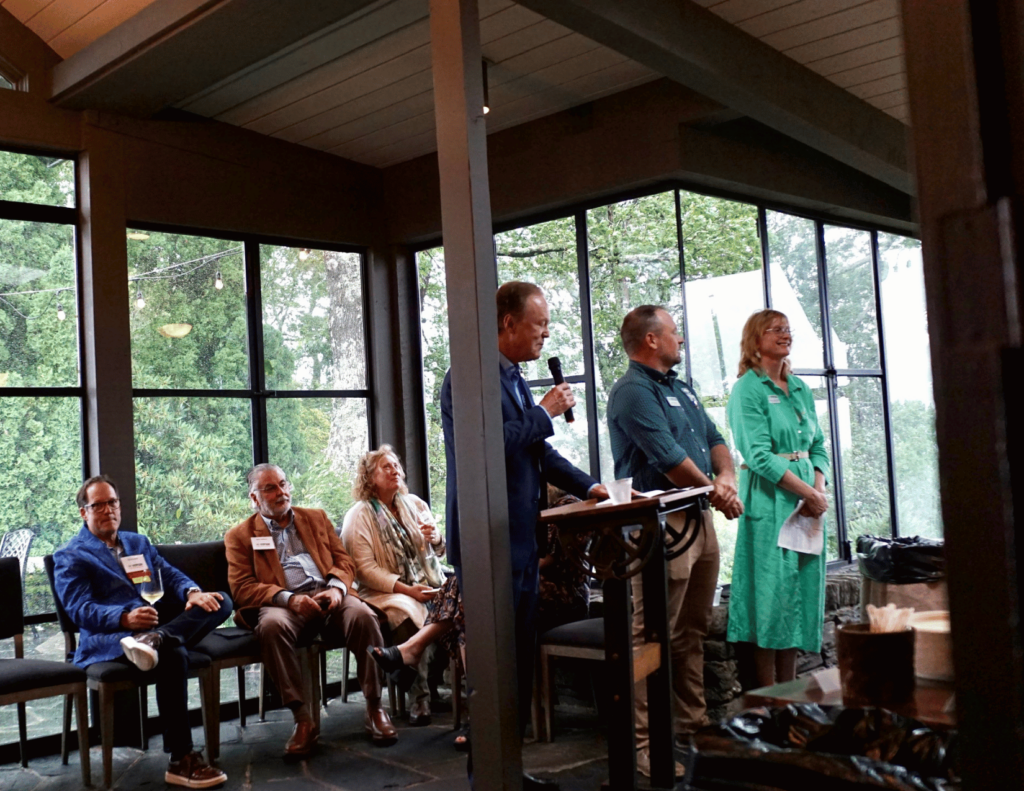
Thank you for your support to everyone who joined us, and we hope to see even more of our supporters next year! To our generous sponsors, thank you, we couldn’t do this work without your support.
2024 Conservation Celebration Sponsors
Lead Sponsors
Chip Anderson
Faye & John Cooper
Carole & Rick Marcotte
Cobb & Cindy Milner
Susan & Tom Ross
Thomas R. Statnick
John & Ashley Wilson
Patron Sponsors
Anna Neal Blanchard
Jo Scott Dorsett & Stuart Dorsett
Kelley Russell
Kathy Hamilton Stamper & Lucian Stamper
Julia Truelove
Joe & Tina Vrabel
Host Sponsors
Lee Carter & Greg Bradley
Alex & Anne Bernhardt
George & Johanna Edens
Dodd Haynes & Clara Martinez Haynes
Bill & Cindy Leslie
Ray Owens & Sally Higgins
Alton Perry
Megg & Robert Rader
Charlie & Deatra Sellers
Craig Weaver & Judy Baker
Jean & Walter Wilkinson
Supporter Sponsors
Glenn Astolfi
Judi & Kevin Beck
Marc Chabot & Cynthia Dillon
Dan Fitz & Mario Cescutti
Judy & Gary Gloster
Juliana Henderson
Drs. Elizabeth & Robert Iwaoka
Duane & Betti Kirkman
Mark Kirkpatrick & Debbie Arnold
Mozine Lowe
Sarah Manning
Margaret Newbold & Liz Watson
Cynthia “Suki” Payne
Ebony L. Perkins
Marc Rudow & Deborah Miles
John & Katherine Singleton
Mary & Donald Tucker
Aidan & Lisa Waite
Judy & Bill Watson
State Designated Natural Area Protected Along the Blue Ridge Parkway
Conservation Trust for North Carolina purchases 68-acre “Grassy Creek Springs” property for permanent protection.
In June, Conservation Trust for North Carolina purchased a unique 68-acre property including the majority of the “Grassy Creek Springs Natural Area,” recognized by the NC Natural Heritage Program for its ecological significance. The land adjoins the Blue Ridge Parkway at milepost 332 in southern Mitchell County and features natural springs and seeps, an abundance of spring wildflowers, and native forests that have been undisturbed for nearly a century. Positioned between Little Switzerland and the Museum of NC Minerals, the property protects views of mature forestland along a heavily traveled section of the Parkway.

“We are grateful to the landowners, our state funders, the Stanbacks, and to all of our donors and allies for helping us to secure this one-of-a-kind property,” stated Cynthia Satterfield, Executive Director of Conservation Trust for North Carolina. “We are also grateful for our long-standing partnership with the National Park Service and look forward to working with them to incorporate the Grassy Creek Springs property into the boundaries of the Blue Ridge Parkway in the near future.”
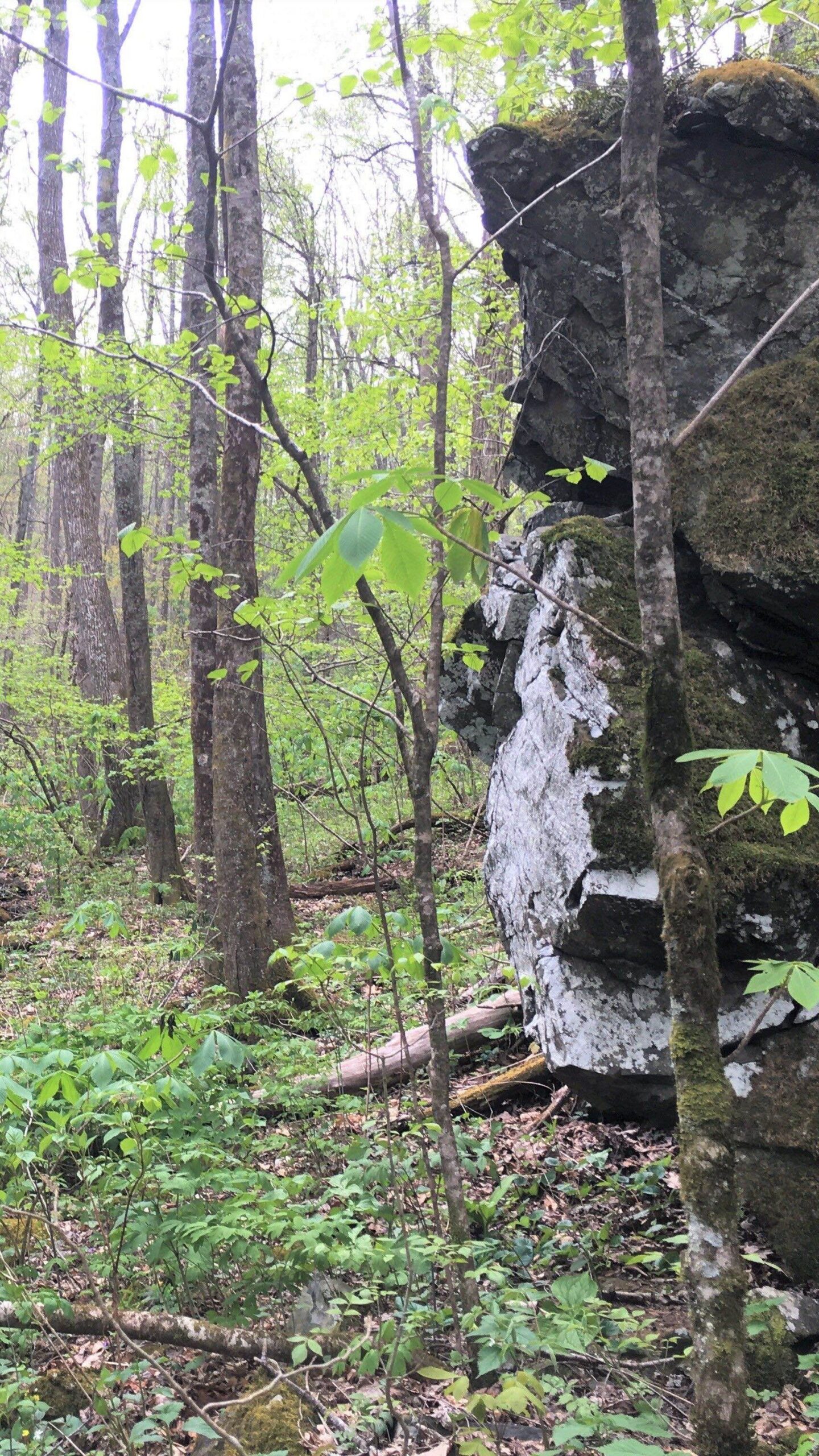


CTNC was fortunate to work with sellers who were committed to ensuring the property’s protection in an area popular for second-home development and destructive mining and timber operations. The landowners generously agreed to sell the property at below market price in a transaction referred to as a ‘bargain sale,’ reducing the funds CTNC needed to raise for the purchase. Public funding was secured from the NC Land and Water Fund and the NC Environmental Enhancement Grants Program. Private donations from Fred and Alice Stanback of Salisbury, NC, and many other individuals from across the state also helped make the purchase possible.
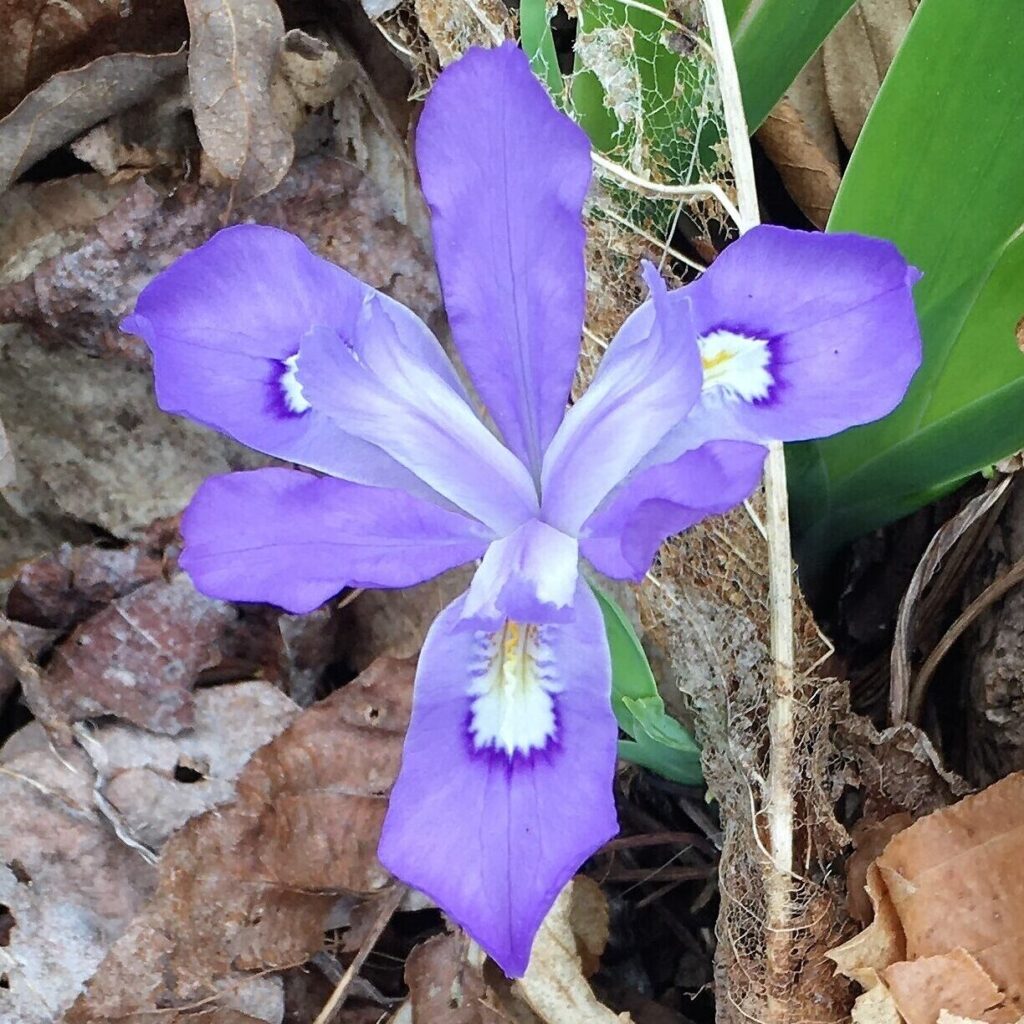

The purchase forever protects scenic views from the Parkway and nearby Mountains-to-Sea Trail, safeguards clean water, reduces the risk of flooding, provides a haven for plants and wildlife, and enables the forest to continue sequestering carbon from the atmosphere.

Celebrating Earth Day Every Day: A Tribute to Conservation Efforts in North Carolina
Recently, Conservation Trust for North Carolina gathered to celebrate Earth Day and our long-standing commitment to protecting the land, water, and communities that make North Carolina special. Through each project, whether it be building community resilience through our Resilience Corps NC AmeriCorps program, protecting land along the Blue Ridge Parkway, or partnering with local governments and community stakeholders to build a more flood-resilient state, CTNC prioritizes the strength of resilience in our environment and communities.



Recognizing Collaboration in Conservation
Earth Day Celebration – Raleigh, NC
This Earth Day, CTNC accepted $50,000 to support our environmental justice and climate resiliency projects from the Duke Energy Foundation. CTNC staff and board members gathered in Raleigh to receive the award and celebrate Earth Day achievements alongside our incredible conservation partners from the Parkway to the Triangle.
CTNC’s Board President, Bill Leslie, accepted the grant.
“On behalf of Conservation Trust for North Carolina, our board and staff, and community partners throughout the state, I want to express heartfelt appreciation for the Duke Energy Foundation’s investment in our vision to inspire and enable North Carolina communities to build resilience to flooding and other climate change hazards.”
He added, “Conserved land provides access to trails and green space, protects farms that generate our food, and can absorb stormwater during extreme flood events that are becoming more common every year. We look forward to making a deeper investment in communities, from the Blue Ridge Parkway to Princeville in Eastern N.C., and right here in Southeast Raleigh, all in collaboration with local leaders who value and understand how land conservation can help address our current climate crisis.”
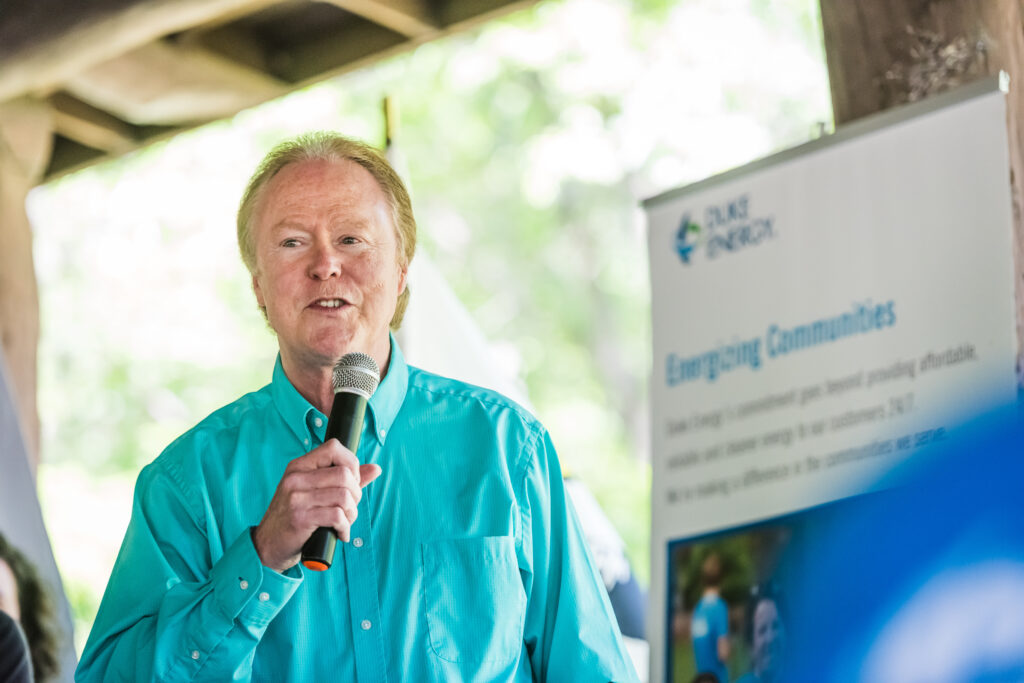
“Communities across North Carolina have seen firsthand the lasting impacts from storms and excessive rainfall,” said Cynthia Satterfield, executive director of Conservation Trust for North Carolina. “We are grateful that Duke Energy recognizes the importance of building resilient communities equipped to reduce and manage flood risk and that they are helping fund this critical mission.”

Of the seventeen local nonprofits recognized by Duke Energy Foundation, CTNC is proud to operate in partnership with five conservation partners: Ellerbe Creek Watershed Association, Partners for Environmental Justice, NC Wildlife Federation, and Blue Ridge Parkway Foundation. Together, we’re dedicated to achieving community resilience through climate change solutions for all North Carolinians throughout the state.
Blue Ridge Parkway Earth Day Dedication
At Craggy Gardens, a popular stop on the Blue Ridge Parkway, CTNC’s Land Protection Director, Rusty Painter, and Western Conservation Manager, Aaron Flannery, attended an Earth Day event focused on conserving Western North Carolina public lands.


“We are grateful for our lasting partnership with the Blue Ridge Parkway, our fellow land trusts, the multitude of other partners, and landowners who enable us to continue protecting ‘America’s Favorite Drive'” states Rusty Painter. “As one of the most-visited units of America’s national park system, preserving the land along the Parkway is crucial for current and future generations to enjoy all that the Blue Ridge Mountains have to offer.”

Making Investments in Long-Term Conservation
Rounding out Earth Week, Governor Cooper released his final budget recommendations. The package reinforces his administration’s commitment to conservation and climate resilience initiatives. Learn more about the budget proposal and placements for increasing conservation funding here.

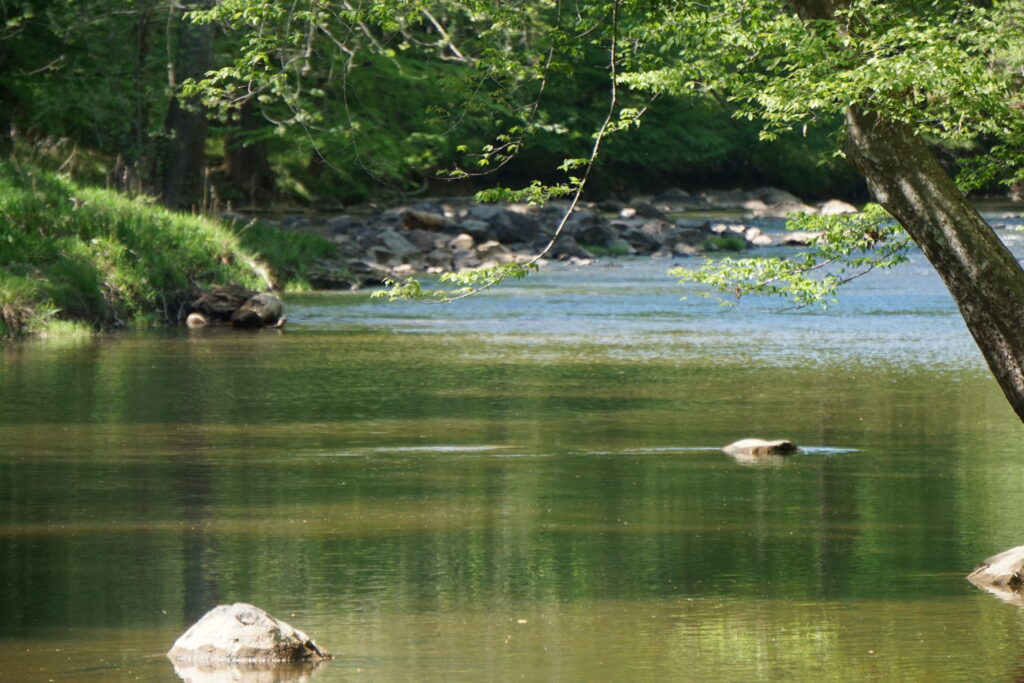

As we celebrate and reflect on this year’s Earth Day, we are immensely grateful for the statewide network of partnerships we hold to amplify conservation efforts. By standing together and working collaboratively, we can face the challenges posed by climate change head-on and build a brighter future for North Carolina.
AmeriCorps Members Contributing to Protecting Western North Carolina for Generations to Come
Preserving the mountain ecology and prioritizing environmental education through building community capacity in Western NC
In the Western region of North Carolina, three Resilience Corps NC members are serving local communities. Through environmental education programs, land conservation efforts, promoting sustainable agriculture practices and interpretive hiking events, these members are actively assisting the needs of Western North Carolina at a local community level.
With CTNC’s Resilience Corps NC AmeriCorps program, building capacity is more attainable. The placement of members directly contributes to the current and future projects that nonprofits and local government/agency partners involved in the program hold to benefit North Carolina.
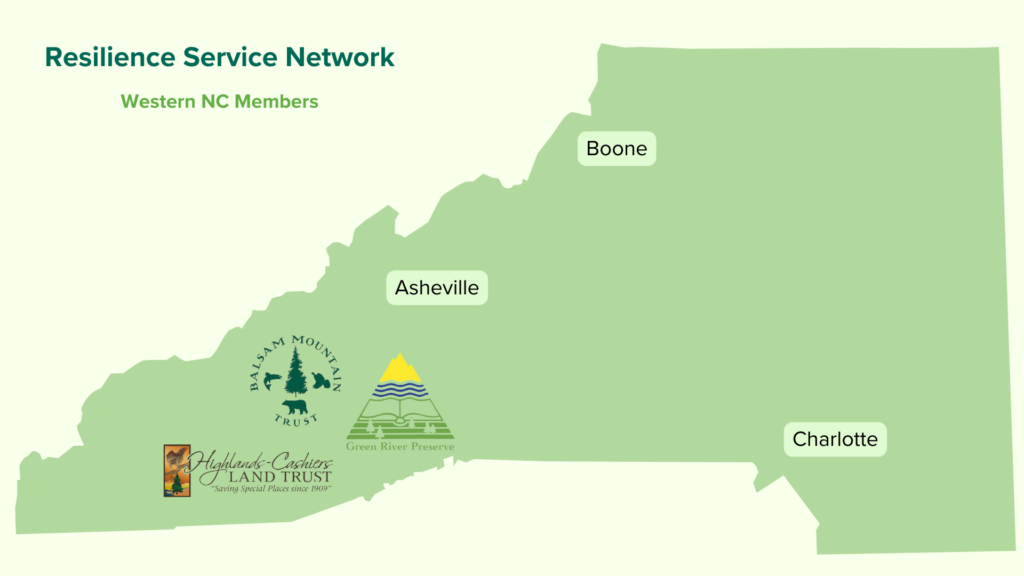
Evidence of Resilience in the Blue Ridge Mountains
Lauren Howard: Green River Preserve
Lauren Howard serves as an Environmental Educator at Green River Preserve. Green River Preserve is nearly 4000 acres of protected land in Cedar Mountain, NC that is home to a summer camp and field trip site. Lauren grew up attending summer camps at Green River Preserve and was also a camp counselor while she was completing her undergraduate degree.
Lauren is proud to serve as GRP’s AmeriCorps member to educate children and assist farm tasks on the property, especially since she has a previous connection to the organization. Lauren focuses most of her time on the KALE Program, Kid’s Agricultural Learning Experience, updating the curriculum and creating environmental education-themed activities to immerse students in the natural world. The program allows children to have hands-on experience in learning about agricultural practices, environmental conservation and an introduction to the diverse ecology of Western North Carolina.
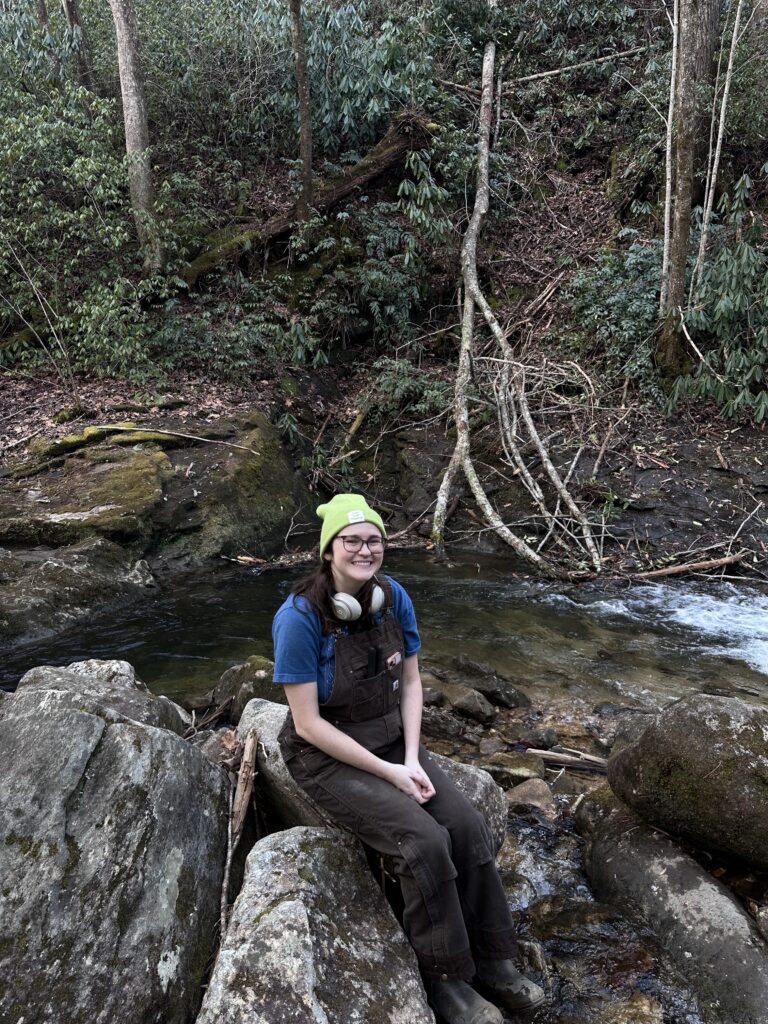
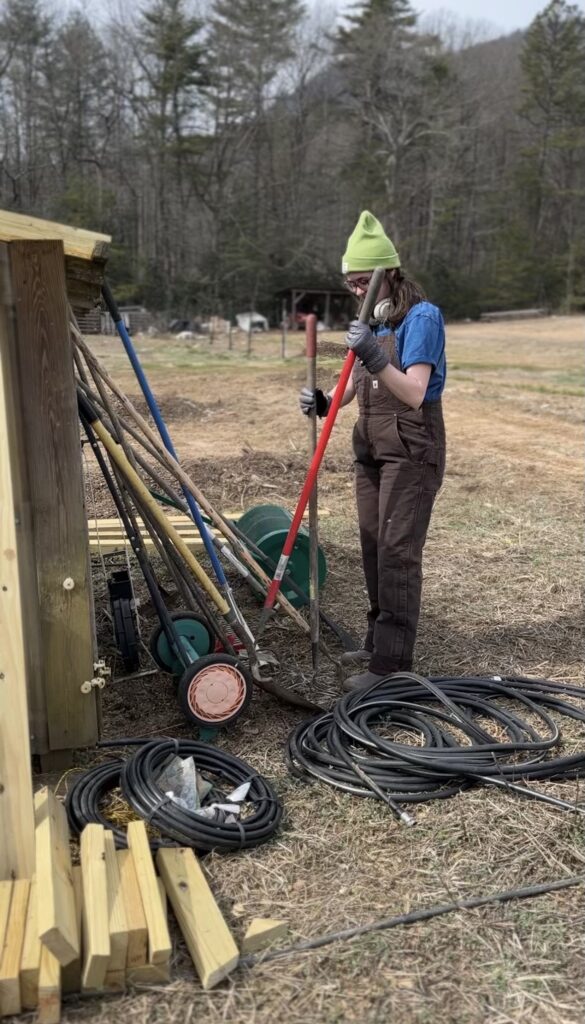

Gina Patton: Balsam Mountain Trust
Gina Patton serves as the Education Outreach Coordinator for Balsam Mountain Trust in Sylva, NC, where she oversees public-facing environmental education programs. Balsam Mountain Trust is a part of Balsam Mountain Preserve, a private residential area in the Blue Ridge Mountains. Balsam Mountain Trust aims to create environmental stewards with a focus on preserving the ecology found among the Blue Ridge Mountains.
Throughout her service year, Gina has achieved significant milestones, including recruiting and supervising an animal care volunteer and delivering various educational initiatives such as the Adopt-A-School program and ecoEXPLORE programs to Title One schools and county libraries.
She has also conducted interpretive hikes and hosted school field trips, showcasing her dedication to environmental education. Currently, Gina is focused on planning the 7th annual Bird Festival to celebrate World Migratory Bird Day. Gina enjoys leading interpretive hikes at the local public park to educate the public on the local wildlife. A highlight of her role includes engaging children in hands-on experiences, as depicted in the attached image where she is seen allowing kids to interact with Orville, the corn snake, during an Adopt-A-School program.

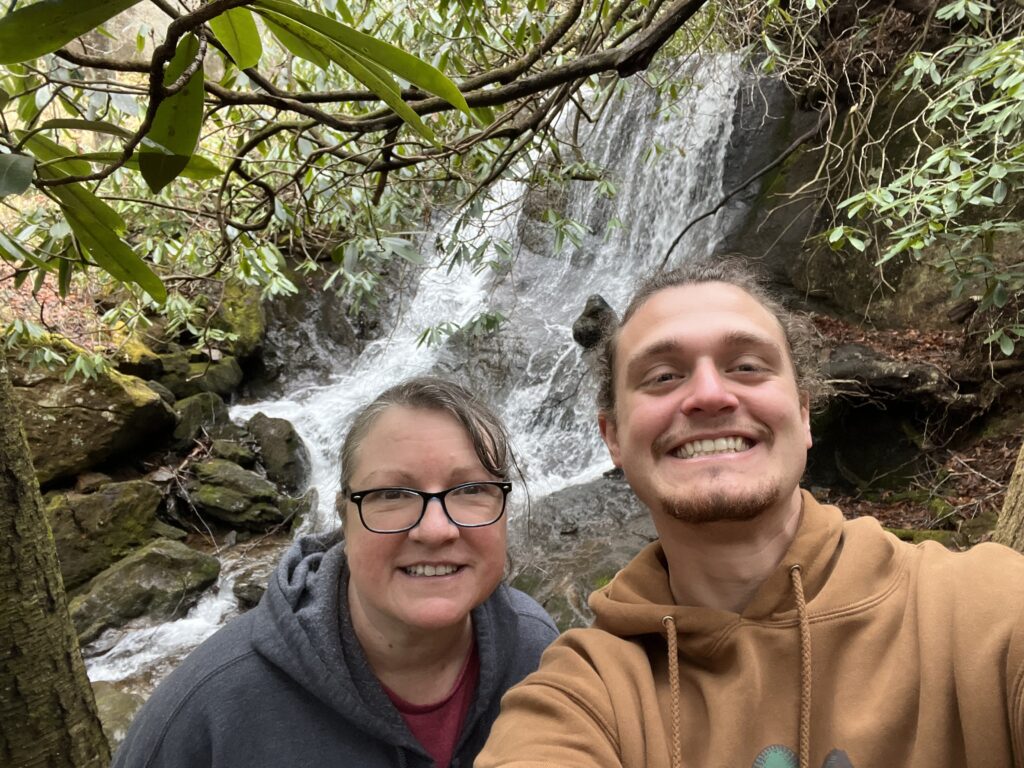
Jessica Blackburn: Highland-Cashiers Land Trust
Jessica Blackburn serves as an Environment Educator at Highlands-Cashiers Land Trust (HCLT) in Highlands, NC. HCLT focuses on preserving the Soutern Appalachians through the conservation of wetlands, forests and vistas. At HCLT, Jessica plays a pivotal role in organizing and planning after-school programs, coordinating community events, managing social media, and fostering connections with local schools and community members.
Jessica has assisted in waterway preservation through her collaboration with Environmental Quality Institute (EQI) in Asheville to collect water samples at HCLT’s public access property, Brushy Face. Once more cumulative data has been analyzed, Jessica plans to hold community events for locals to get educated on the health of their streams.
Additionally, Jessica has facilitated pottery programs in partnership with a local K-12 school to have pottery programs that educate students on how the Cherokee people have used and use clay to make functional pottery.
She has also pursued personal development opportunities by completing a chainsaw course and making progress toward an environmental educator certificate. Currently, Jessica is spearheading two major projects—a bioblitz and a partial eclipse watch party—and has committed to staying for a second term with Resilience Corps NC at HCLT to see through her ongoing projects.
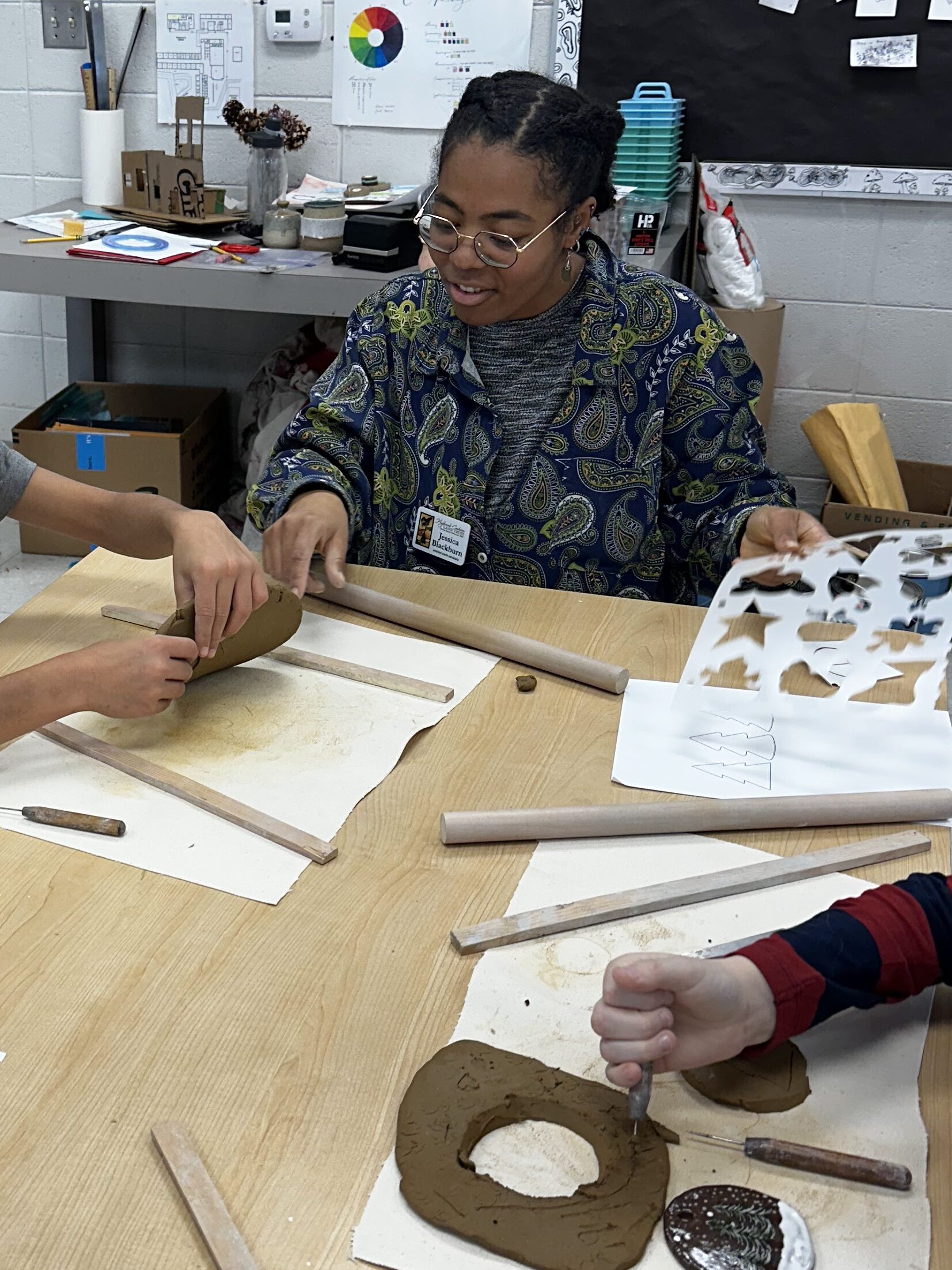
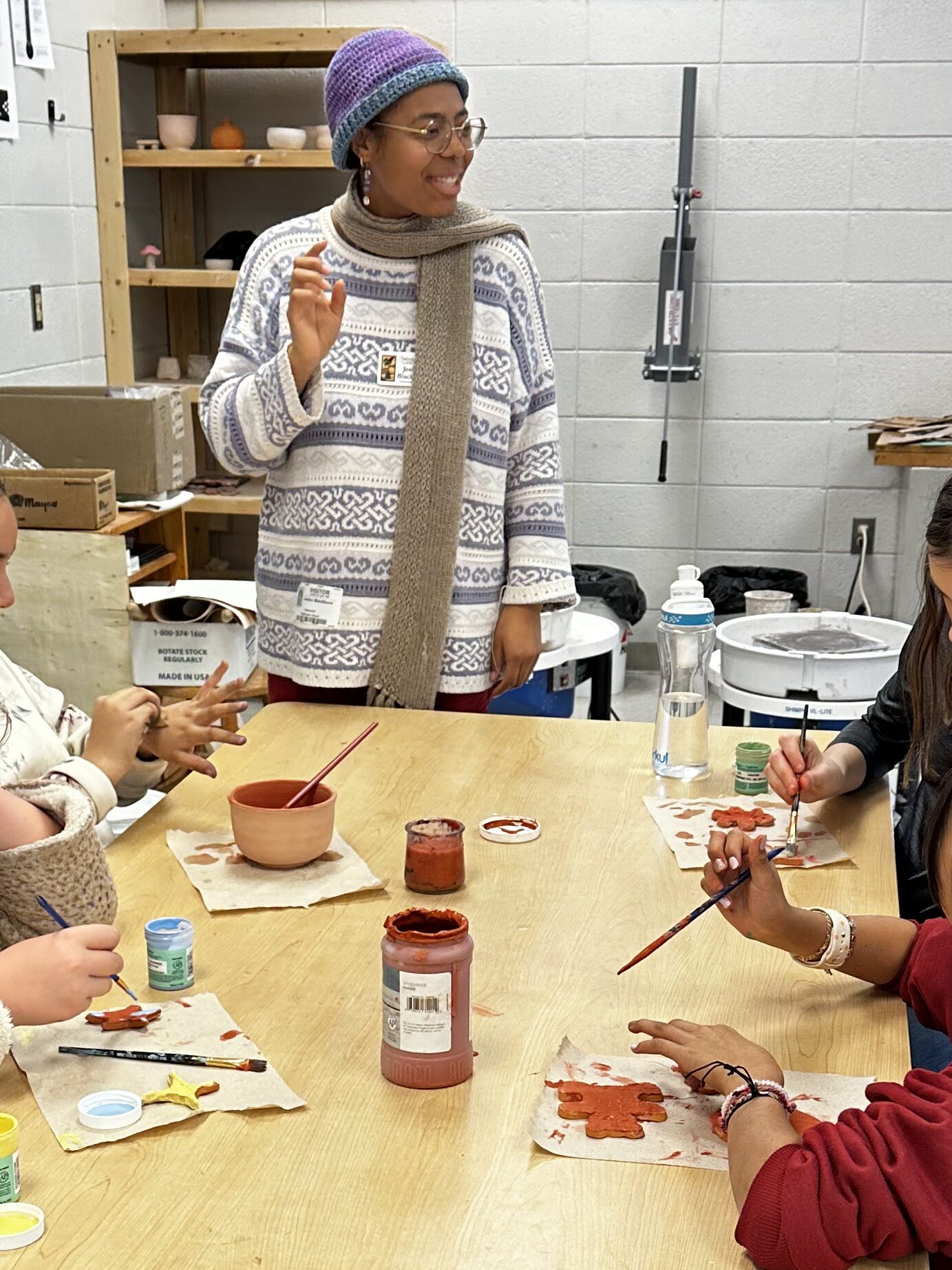
The Future of Resilience in Western North Carolina
Western North Carolina is a large asset of what makes North Carolina so enchanting and ecologically diverse. Protecting the land along and past the Blue Ridge Parkway is crucial to ensuring that future generations can view the vast landscapes of the Blue Ridge Mountains. Through the service of AmeriCorps members that build capacity at the local community level, active progress is being made towards prioritizing conservation and education in Western NC.



